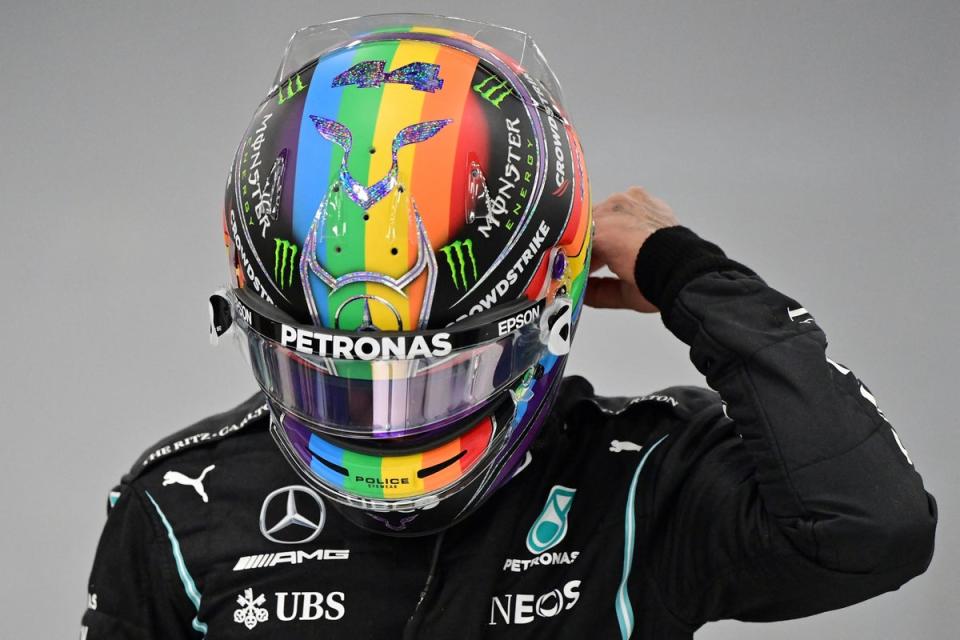Phil Mickelson draws a crowd as Saudi Arabia’s controversial LIV Golf swings into town

Phil Mickelson was cheered on to the first tee at Centurion, and he smiled. Maybe his smile betrayed some relief at a reputation seemingly intact among fans despite a damaging few months. Maybe there was some pleasure too, at finally returning to competitive golf after a self-imposed hiatus. Or perhaps it was just the smile of a man who had pocketed $200m for turning up.
Whatever it was, there was no doubt Mickelson was the star attraction as the richest tournament in the history of golf got under way with an aerial show of vintage aircraft and some trumpeters with bearskin hats, while players were transported to their tees in London cabs. This may be Saudi Arabia’s latest controversial foray into the world of sport, but the product was sold with an odd splattering of British culture in the Hertfordshire countryside.
The event was well run at a picturesque golf course, which begins picking its way through narrow gaps in the forest before opening out into rolling terrain of grass and gorse. Mickelson appeared relaxed, greeting fans when he visited the far extremities of several holes as his round got off to an inauspicious start. He played some majestic recovery shots like his faded seven-iron from the trees on to the third green, before finishing strongly with four birdies to end on -1, four shots off first-round leader Charl Schwartzel.

It may not have been so smooth behind the scenes. Tickets were apparently still on sale at Thursday lunchtime (the natural result of revealing most of the cast list too late for fans to book the day off) and there was still no UK broadcast deal – the action could only be watched on LIV’s YouTube channel and Facebook page.
And what were we watching, exactly? There were some famous and not-so-famous golfers playing golf, but was this really a look into the future of the game, as LIV’s slick publicity videos claimed? There have been many attempts to modernise sport in recent years to satisfy the TikTok generation’s supposed thirst for instant gratification, like the Olympics’ move towards breakdancing and e-sports or cricket’s The Hundred. But walking around Centurion, it wasn’t clear what was so revolutionary about LIV and the format its players claimed to have fallen in love with.
“Golf but louder,” goes the slogan, yet it was hard to know what brought the noise beyond some trumpets and the promise of live music after the sport. The action was “fast and furious”, according to commentator Arlo White, yet it wasn’t obvious in what way. “Don’t blink,” said another piece of branding, as if you couldn’t possibly afford to miss Kevin Na weighing up every angle of every shot like he’d been snookered.
How does removing the traditional mid-tournament ‘cut’ benefit the product, beyond guaranteeing players’ prize money? A tour that wants to rip up golf’s rule book might be expected to come up with something more radical, like even the threat of cuts during rounds to knock out stragglers and add some jeopardy. The “shotgun start”, where each playing group began at the same time from different tees, added an element of intrigue to a live leaderboard but it was hardly notable.
Nevertheless the spectators seemed to enjoy the show, which also featured a Fan Village with kids’ entertainment, swing coaches and street performers. During the golf itself the fairways were lined with young men in bucket hats watching big drives and saying things like “that is money” and “absolutely painted”. The pairing of Mickelson and Dustin Johnson commanded a sizeable following and the future additions of Bryson DeChambeau, Patrick Reed and Rickie Fowler are only going to enhance the tournament’s appeal when it lands in Oregon later this month.

LIV chief executive Greg Norman hailed the team element, which may yet come to the fore though it already feels a bit clunky. The team names are a random selection of tenuous golfing words (Torque, Hy Flyers, Fire Balls) with no meaning. Or, as Golf Digest put it this week: “The LIV team names are in and they are the worst thing you’ve ever seen.”
Graeme McDowell claimed that LIV could be cricket’s The Hundred for golf, and it’s an interesting comparison. The Hundred made a successful debut last summer despite plenty of scepticism but it had several advantages that LIV Golf does not have. It had the backing of the sport’s governance, as well as a broadcasting partner which trumpeted its cause. It used places to create a sense of identity in its teams (London Spirit, Birmingham Phoenix) and turned its draft into a TV event. It also had access to many of the best players around to draw a crowd and used a simple, accessible format to put on a show. By contrast, LIV’s draft went under the radar, the entire event is at war with the PGA Tour, and it is accused of being a sportswashing tool for the Saudi state.
Saudi Arabia has already invested £600m into a 10-year deal with Formula One, spent £400m on a Premier League football club and spent lavishly on horse racing, tennis, chess and boxing in recent years. But what is so eye-catching about LIV Golf is the brazenness of it – no cloak and dagger, no softly softly approach, instead simply buying up stars with vast sums of money under the thinnest of thin veils about “growing the game”. Saudi’s previous forays into sport have been delicate chips into the existing landscape but LIV is a brash, booming drive down the fairway.
The players are “independent contractors”, as they keep insisting, free to play where they please, which only makes the entire cynical ploy all the more transactional: cash for legitimacy, for a seal of approval and a smiling face on the billboard. There is an element of distance between footballers and the Qatar World Cup, or F1 drivers and race hosts like Saudi Arabia and Bahrain, so much so that Lewis Hamilton could even make a statement by wearing a rainbow helmet. But LIV Golf’s relationship between athlete and authoritarian state feels more intimate; would any of these golfers feel comfortable taking a similar stand?

It is not just the players who are enabling the Saudi project. Centurion Club has offered itself up, selling a slice of Hertfordshire countryside. There doesn’t seem to be much concern about the Saudi influence at Centurion, where there are future ambitions to build a new nine-hole course. As one member of this exclusive golf club told The Independent this week: “If we didn’t take the money, another club would have.” Money flows through the entire project: even the camera operators are getting paid 40 per cent more than their normal day rate.
Its seems unlikely Saudi Arabia’s Public Investment Fund will ever recoup the $2bn sunk into the project, but then that’s not really the goal. According to YouTube there were around 90,000 viewers on LIV’s stream at the round’s halfway point, which doesn’t exactly indicate a golfing revolution. It may never match the prestige of the PGA Tour or bring in the eyeballs of a major tournament. But if LIV Golf is simply about coaxing high-profile faces to the brand to reassert Saudi Arabia as a major player on sport’s global stage, that is slowly but surely being achieved, despite the challenges. Mickelson’s smile is a reminder of that.

